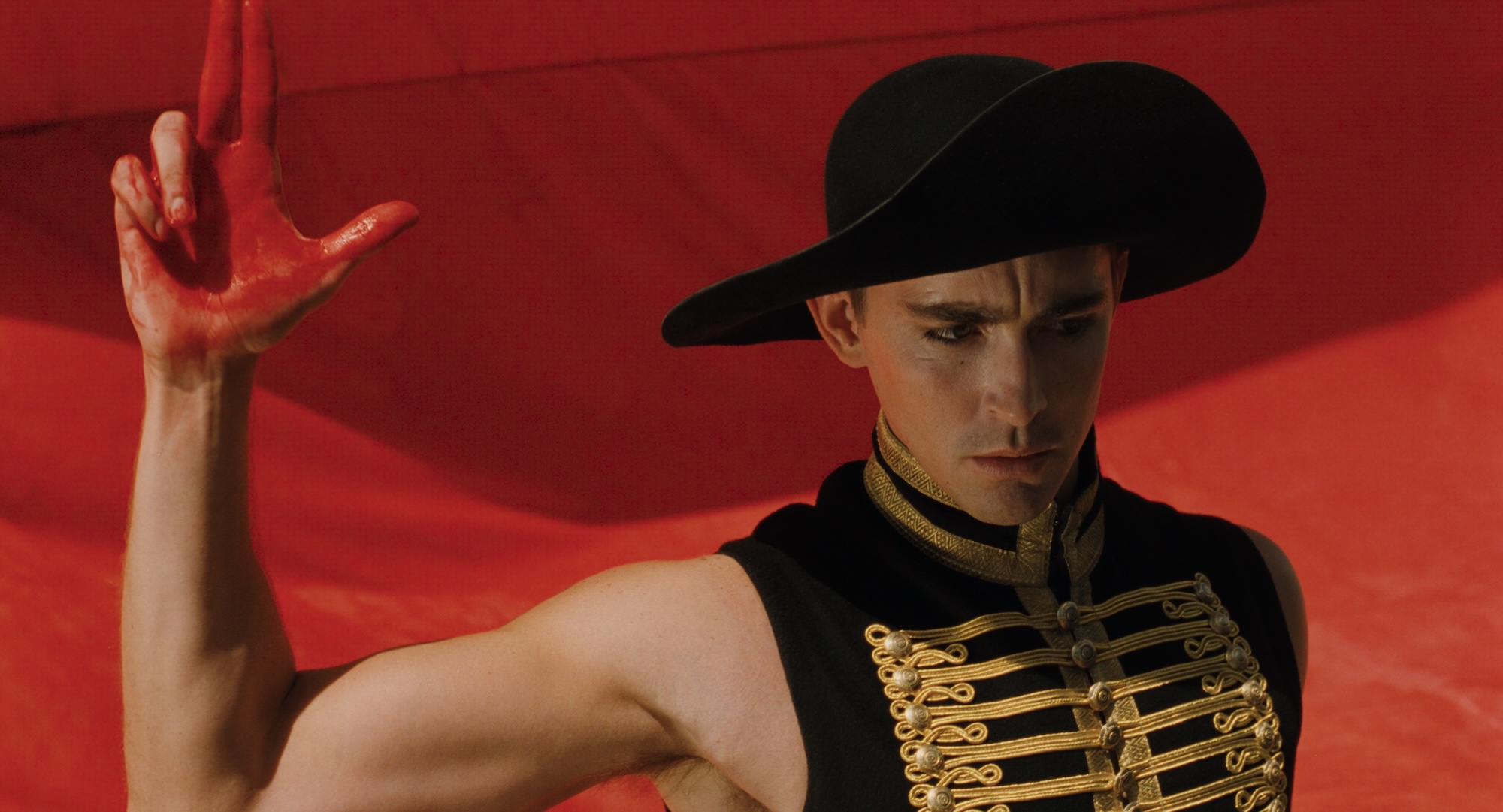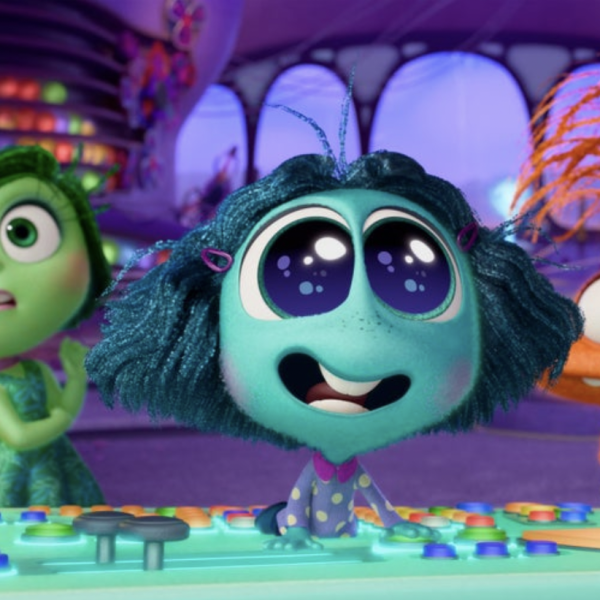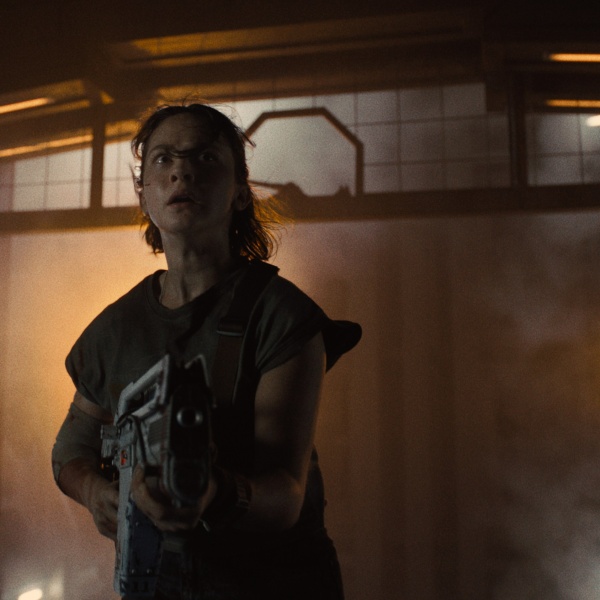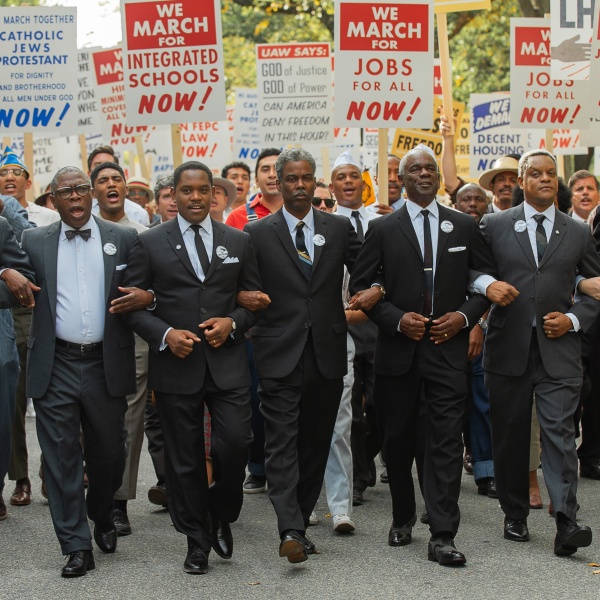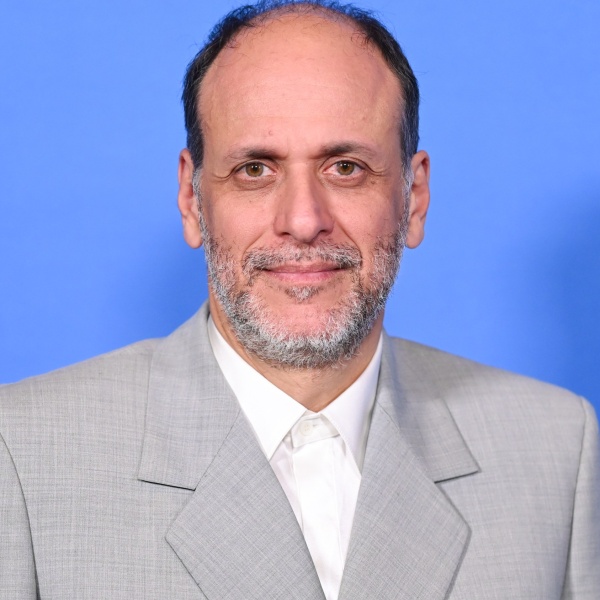What was the first story that captivated you as a child? That’s where “The Fall” starts.
Director Tarsem Singh‘s 2006 fantasy drama tells the story of Alexandria, a little girl who befriends Roy, a 1920s movie stuntman paralyzed in a Los Angeles hospital. He begins to tell her a magical story, all the while trying to manipulate her into getting him drugs to help him end his life. The film takes place partly in that sunny hospital and partly in impossible locations where the story of a group of bandits out for revenge leads them to travel the world. Self-financed entirely by Tarsem — as he’s known simply — “The Fall” filmed over the course of several years in more than 20 countries.
But there has always been another dormant story in the tale of “The Fall.” A story of how a dedicated group spent decades embarking on a film production model never attempted before. About a film no one wanted that spent years gaining traction as a cult favorite before finally securing a mainstream release.
Tarsem credits two experiences with sowing a lifelong interest in telling the kinds of stories that led to “The Fall.” His teacher would sit him and his classmates down and tell them tales with cliffhangers, leaving her audience waiting for her to continue the tale each week.
The other experience was going to Iran — where his father worked when Tarsem was a child—and watching films dubbed in Farsi, a language he did not understand. Tarsem would come back and recount the stories of these films to his friends. He wouldn’t be able to recite dialogue or accurate plot elements; instead, he would let the film’s visuals guide the story’s path and use his own perceptions of what else was happening to fill in the rest.
“The Fall” is based on the 1981 Bulgarian film “Yo Ho Ho” that Tarsem watched during boarding school in the Himalayas. The film takes place in the modern day and has a premise similar to “The Fall”: a movie stuntman befriends an injured child in a hospital and tells him a fantastical story of pirates and adventure while trying to manipulate him to get enough drugs to end his life.
Once in film school, Tarsem decided he would make his adaptation of “Yo Ho Ho,” which would become “The Fall.” His classmates at ArtCenter College of Design in Pasadena included Michael Bay and Zack Snyder, alongside future collaborators Nico Soultanakis and Stephen Berkman. After graduating and making his first significant amount of money in commercial directing, Tarsem bought the rights to “Yo Ho Ho” in anticipation of making “The Fall.”
Throughout the 1990s, Tarsem told his friends and collaborators about “The Fall” including production designer Ged Clarke in 1992 while they worked on a Smirnoff commercial. In 1994, Clarke started officially working on the film but didn’t get a script — penned by Tarsem and Soultanakis — until a few years later.

“The Fall” was never pitched as a traditional film. Early Tarsem supporter David Fincher set up meetings with major producers and financiers, and Tarsem would bring Alexandria’s cigar box to these meetings, describing the story in fragments. When he announced his intention to film in at least nine countries (the final number came closer to 28), no producer would finance the film.
“I realized, ‘Nobody can help me. I just need to make this,’” Tarsem told IndieWire during a recent interview tied to the film’s return to theaters and streaming on MUBI in 4K. “And suddenly, the right thing happened. My girlfriend dumped me, and I just said, ‘Oh fuck it. What is this money for?’”
The missing piece for launching “The Fall” was the child actor to play Alexandria. Tarsem searched for young boys and girls, including family members, but found that children around seven and eight were too old. Tarsem even briefly met with a young Elle Fanning for the role.
While on a shoot in Romania, Tarsem sent his brother Ajit Singh to local schools. He was instructed to tell stories to a classroom and watch for a child who had earnest and engaged reactions to every twist and turn. That is where Singh found Catinca Untaru, who was four and a half at the time. However, as she did not speak English, it took more than a year for her to learn the language — which bought the filmmakers time to finalize locations.
During this time, Clarke planned to film “The Fall” on soundstages in Romania. However, Francis Ford Coppola had rented all the soundstages the production wanted for his film “Youth Without Youth.” Thus, the decision was made to shoot entirely on location.
During Tarsem’s 17 years working in commercials, he was always location scouting for “The Fall.” Unlike most film productions, which need to account for parking and lodging space for large production vehicles and base camps, Tarsem sought locations that fit the film’s fantastical landscapes. Meanwhile, he was also building a crew to follow him worldwide.
Assembling the Crew
Much of the crew for “The Fall” consisted of longtime collaborators, from Clarke, who worked on numerous commercials with Tarsem, to Soultanakis as writer/producer. Soultanakis’ partner Eiko Ishioka — the visionary Oscar-winning costume designer for “Bram Stoker’s Dracula” who previously worked with Tarsem on “The Cell” — joined “The Fall” as the film’s costume designer.
“She had all these stories about color and saw these characters as kind of like Japanese comic book characters and rainbow colors,” Soultanakis said. “It did make it kind of dynamic that way.” Her approach to design went beyond “outside of the box” construction. “She didn’t know what the box was,” Tarsem said of Ishioka.

Tarsem originally wanted to use Paul Laufer, the same cinematographer from “The Cell” and also Tarsem’s teacher in school. However, major disagreements chalked up to creative differences by multiple sources led Laufer to leave the project. So Tarsem had his focus puller Colin Watkinson step into the role for his first feature cinematographer credit.
For the script, Tarsem was introduced by his manager to writer Dan Gilroy, who worked on the script for about two years, deferring his salary on “The Fall” because Tarsem’s vision so convinced him. “I thought, ‘I’m going to work on this, I don’t care if I get paid,’” Gilroy said. “I wanted it to exist the way [Tarsem] wanted it to exist.”
For casting Roy, the paralyzed stuntman and storyteller, Tarsem wanted an unknown actor. Lee Pace had only one previous film credit with “Soldier’s Girl,” where he played a woman. Despite getting a Golden Globe nomination for his role, this meant Pace was unrecognizable to the rest of the cast and crew.
Tarsem wanted the environment of the story to feel real to Untaru. He pitched Pace on having him pretend to be paralyzed in real life and only use a wheelchair on set. Tarsem was inspired by the French film “Ponette,” where the production made a young child believe all the events happening around her were real.
“I trusted [Tarsem],” Pace said. “I was so inspired by his force of will and the clarity of what he was doing and the experimental nature of it.”
Only a few crew members knew the truth about Pace. Since the fantasy scenes of the film were to star Pace as the masked bandit who walked and rode horses, Tarsem misled much of the crew to believe Romanian actor Emil Hoștină, who plays Alexandria’s father, was playing the bandit.
Creating Authenticity
Filming for “The Fall” began in 2004 with Roy’s first story: the tale of Alexander the Great lost in the desert. The scene at the base of gigantic sand dunes was shot in the same location as the opening scene of “The Cell” in Namibia, a location Tarsem always intended to use for “The Fall.”
Location shoots for “The Fall” were often done in tandem with commercials Tarsem was directing. Tarsem would shoot a commercial, keep the crew for a few extra days, and pay to fly in the actors and other crew members to shoot scenes for “The Fall.” The Namibia shoot took place on the heels of a Mountain Dew commercial.
The next stint of filming was all the hospital scenes. The seven-week shoot took place at the Valkenberg Psychiatric Hospital in South Africa — with the 200-person crew situated in an empty wing of what became the film’s 1920s L.A. hospital.

Most film productions have their wrap parties at the end of filming, but “The Fall” had its own at the start because Tarsem wasn’t sure whether he would have enough money after such a globe-spanning production.
In each location, the cast and crew adapted to a new world. Photographer Stephen Berkman recalled seeing a dead body on the side of the road once in South Africa, and vehicles leaving the mental asylum had to have their trunks checked for escaping patients. Some of the patients were not friendly toward the production crew. As Tarsem learned at the end of shooting, the patients were disappointed they weren’t asked to be extras in the film.
Roy and Alexandria’s first meeting onscreen was also Pace and Untaru’s first meeting in real life. That Untaru believed Pace couldn’t walk led to a rare authenticity in her performance. “She was careful with my feet when she would get in the bed,” Pace said. “When we were talking, she would look at my leg, and she was trying to put it together… She believed it so clearly.”
During many of their scenes, Alexandria sits on Roy’s bed, a curtain around them, as he tells his tales. These scenes were shot by cutting three holes in the curtains and running the cameras continuously, carefully replacing reels when needed. “We tried to reduce ourselves as a crew so she wasn’t distracted,” Watkinson said.
Tarsem allowed the natural interactions and miscommunications between Pace and Untaru to drive the story. When Roy writes the word “morphine,” Alexandria mistakes the E for the number “3” and only brings him three pills. This came from Untaru misreading Pace’s handwriting, so Tarsem added the story beat. “I’m all about improvisation, but I always tell people it’s gotta be like jazz,” Tarsem explained. “You learn the notes, but you have to forget [them].”
In only his second film, Pace emerged as the “unsung hero” of “The Fall,” according to Tarsem. The actor often lit and blocked Untaru on his own. Pace also handled the miscommunications that arose between them, as Untaru was still learning English (Tarsem eventually had to spend less time with the actress because she began to speak English with an Indian accent).
On the last day of shooting in South Africa, Tarsem revealed to the rest of the cast and crew that Pace could actually walk. This moment is captured in Soultanakis’s behind-the scenes documentary on “The Fall” that was featured as a DVD extra. The crew erupts into claps and cheers. But Tarsem recalled Untaru quickly moving on from the revelation in the unphased way only a child could react.
The Trials and Tribulations of Traveling the World
The next bulk of shooting took place in India, the backdrop of many of the film’s fantastical locations. They filmed during the summer with a crew of 400. Due to the extreme heat, producer Tommy Turtle negotiated a reduced rate at the luxury hotel chain Oberoi Hotels, which housed the cast and crew.
“Each room cost close to about $22,500 per night. We got it for $90,” Tarsem said. “Everybody was staying in the rooms that had [private] swimming pools.”
The production design of “The Fall” shines during the fantasy scenes. There’s the towering bleeding banner that stood 60 to 80 feet tall. For the scene where the gang of bandits discovers the blue bandit’s bloody body hanging from the ceiling like a chandelier, Clarke and his team made a mold of Deep Roy, who most notably played the Oompa Loompas in Tim Burton’s “Charlie and the Chocolate Factory” film, to design the gruesome centerpiece.

“The Fall” proudly claims to have used almost no CGI, instead finding real locations for all of its backdrops. One of the most iconic shots of the film is that of the priest’s face, which transitions into a barren, rocky desertscape. The crew built the bench and stage in Ladakh and matched the landscape to the priest’s color. Effects artist Tom Sparks was brought in to add additional shading in post-production to achieve the definition on the priest’s face to match the landscape.
Shooting in India and beyond required an additional level of planning. The crew constantly battled large crowds and extreme heat while going from location to location. In Soultanakis’s documentary, he shows hundreds of people gathered around the production watching the film in India.
While shooting at Fatehpur Sikri outside Agra, the crew got into their most violent encounter. The production got permission from the architectural group that handled film permits in the area but received pushback from the local Islamic community who didn’t want the production to film at the religious site. Tarsem was told to make a donation to a local school, but the money never went to the right people. When the crew showed up to film, they were met with resistance from locals and a “mini riot” with baton-wielding police, according to Turtle. They tried to go back again and received the same reaction. It wasn’t until the third attempt that they were allowed to continue.
There were no backup options for each location. “There was no place that I would let go,” Tarsem said.
There were also potential issues at Pangong Lake, the location where the bandits are carried by the elephants and find the Mystic in a tree. It’s located in the Kashmir region, a disputed territory between India and China. Tarsem was warned not to set off any pyrotechnics because they might be perceived as bombs by one of the countries. Ever a “mischief maker,” in Turtle’s words, Tarsem shot the scene where a tree explodes into flames there anyway.
The crew of “The Fall” learned to work smart to film at their many locations. In the city of Jodhpur, due to religious reasons, houses are only allowed to be painted blue. Tarsem wanted the location to pop more so he bought everyone in the town blue paint, knowing it was the only option. The people painted their houses themselves and the production reaped the rewards of the brightly colored city.
“The Fall” shot in locations that film productions had previously ignored. But the film brought new popularity to some places — such as the dunes of Namibia eventually used in “Mad Max: Fury Road.” The cascading stairs where Darwin and Wallace the monkey meet their end was a previously unknown ancient well, but after the film’s release, Tarsem discovered it in multiple Bollywood productions. The location was later scouted for “The Dark Knight Rises” as the underground prison Bane and Bruce Wayne find themselves in, but was ultimately used more as a reference.
There’s a saying in film: “Never work with animals or children.” “The Fall” worked with both. The character of Darwin carries around a monkey in his bag named Wallace, from whom he steals all his ideas (a reference to the debate that Darwin stole his ideas of evolution from Russell Wallace). The monkey was relatively easy to work with — the crew gave him chewing gum to make his lips move and used primarily close-up shots of the bag that could be easily edited in.

The more complicated animals were the elephants that Tarsem brought to the Andaman Islands. He had worked with elephants before on a Coca-Cola commercial, which served as the trial run for “The Fall.” But the shooting window was tight to get both clear water and the correct amount of light. The first attempt to shoot the scene didn’t have the correct conditions, so Tarsem and the crew had to return for the second day, shooting the entire scene in about four hours.
“The shoot days were not that complicated,” Tarsem said. “I knew exactly what I wanted.”
“[Tarsem] never did any overtime at all,” said Turtle.
Post-production happened in Paris, where Tarsem took on an additional role of dubbing in many of the screams for The Indian and the monkey and “25% of the other stuff because I couldn’t afford to fly anybody in,” he said. “So all the breathing, the kissing, the sounds of even the girl, all those ones are just me.”
“The Fall” also features an animated sequence by Christoph and Wolfgang Lauenstein that shows Alexandria’s magical interpretation of her surgery and healing after falling while trying to steal pills for Roy. Tarsem’s original choice for the animators were the Brothers Quay but he had to find another team after discovering the two had already done a fall animation sequence in “Frida” too similar to the sequence he had in mind for “The Fall.”
Meanwhile, Krishna Levy recorded the score for Bulgaria. By a twist of fate, Viktor Chouchkov, who played the role of the child in “Yo Ho Ho,” worked as a teacher in the same building where the music for “The Fall” was recorded.
An Unceremonious Release
“The Fall” premiered at the Toronto International Film Festival in 2006. Tarsem specifically targeted TIFF because it was Roger Ebert’s festival of choice. Ebert had been a major supporter of Tarsem’s previous work, and he knew Ebert would champion “The Fall.” Unfortunately, that year, Ebert missed the festival due to his cancer diagnosis.
Before the TIFF release, Tarsem was approached by Harvey Weinstein, who wanted to see the film early. But Tarsem had known of Weinstein’s reputation for tearing films apart to secure distribution with him and denied his request.
Weinstein was in the audience when the film premiered to distributors at TIFF — 15 minutes in, Weinstein stood up and walked out of the screening, with no attempt to hide his dissatisfaction.
Weinstein’s public rejection of the film led to a cold reception. The critics weren’t kind either, and without Ebert, “The Fall” had no one who publicly believed in Tarsem’s vision. David Fincher and Spike Jonze, both fans of the film, offered to put their names on “The Fall” to help it gain traction.

TIFF ended with “The Fall” receiving no offers for distribution. “They wouldn’t take it for free,” Tarsem said.
The cast and crew were disappointed, as many had spent over a decade working on the film. When asked how he felt about the reception, Tarsem said he allowed himself to be sad for two hours before telling his brother that they should return to doing commercials.
Two years later, Tarsem self-financed the film’s release in partnership with Roadside Attractions. The film played on 16 screens. Ebert finally saw it and gave it a glowing review, naming “The Fall” one of the best films of the year. But there was another issue: “The Fall” received an R rating due to a shot of the villain being impaled by a sword. Tarsem refused to take the shot out to lower the rating, but it meant “The Fall,” a film that embraces the perspective of children and fantastical storytelling that only kids can imagine, was blocked from being seen by its target audience.
In the 18 years since “The Fall” first premiered, the film began to find its audience. Strong word of mouth meant once “The Fall” had a fan, they would be unable to keep it to themself. The beautiful images and landscapes from the film made it especially shareable on social media, including on Tumblr where the film began to develop a strong fanbase in 2012.
After its licensing deal expired, “The Fall” became almost impossible to find. The only way to watch the film for almost 10 years was an out-of-print DVD (which can sell for hundreds of dollars on eBay) or an illegal streaming site. This elusiveness added to the film’s mystique.
Much of the film’s reputation became tied to money given that Tarsem financed it himself. The entire cast and crew were also paid the same no matter their role, an amount estimated by Turtle to be around $2,000 dollars a week, but everyone was happy to accept the lower rate because they believed in the project.
Since every cent came from Tarsem, the crew was especially mindful of any cost and willing to pitch in whenever necessary. When the caterers failed to show up on the first day of shooting in Kashmir, Turtle and the production manager drove down to the valley and bought “as many Maggi noodles as we could find that could feed 400 people,” Turtle said.
Tarsem himself doesn’t know exactly how much “The Fall” actually ended up costing him, although he estimates it’s around $20 million. He went bankrupt financing the film. He told his brother not to tell him exactly how much he lost until he’s ready to know. Tarsem claimed the costs of the film as business losses on his taxes for years, guessing by the end, he probably broke even.
The Making of a Cult Classic
For the cast and crew of “The Fall,” the film has left a permanent impact on their careers. Clarke, Gilroy, Tarsem, Pace, and Watkinson all said multiple people had told them about the impact that “The Fall” has had on their lives or that it was one of their favorite films of all time. Around the world, people have discovered a film that had previously, momentarily disappeared.
Peter Jackson said he was a major fan of “The Fall,” which is why he wanted to meet with Lee Pace and cast him in “The Hobbit” films. When Watkinson became a first-time director on an episode of “The Handmaid’s Tale,” he mimicked Tarsem’s speaking style when directing actors.
“I get endless emails every week from some art student or film student asking me to tell them more about ‘The Fall,’” Clarke said.
“The Fall” has launched back into conversation with its recent re-release through MUBI. The 4K restoration was not a difficult leap, as the original film was converted into 4K from its 35mm prints after filming. The new version is not much different from the original, though the restoration includes an added scene where The Priest has a chilling encounter with a snake. It also restores Tarsem’s initial idea for the opening title to say “Once Upon a Time in Los Angeles.”
“I realized the moment that Tarantino’s movie [“Once Upon a Time in Hollywood…”] came out I was like ‘Oh my God, that was the right answer.’”
The MUBI re-release of “The Fall” premiered at the Locarno Film Festival in August, with the 4K restoration making its U.S. premiere at Beyond Fest, screening at the historic Egyptian Theater in Hollywood. The screening sold out in less than 10 minutes. Tarsem was in attendance alongside Soultanakis, editor Robert Duffy, and Berkman. He received two standing ovations. The theater laughed and cried, and the crew got to witness a reception that was 20 years overdue.
As part of the re-release, Mubi is also doing nationwide event screenings of “The Fall” on October 15 in the United States. “The Fall” will now have the widest release in the 20 years of its lifespan — including when it premiered. In other words, a once-unwatchable film will now be shown in AMCs.
“The Fall” returns in 2024, when self-financed directorial visions are having a moment in cinema. Kevin Costner had the first of his planned four-part western series “Horizon” premiere in May. Costner spent $38 million of his own money to finish the film. A few months later, Coppola’s “Megalopolis” premiered an entirely self-financed epic with a $120 million budget, dethroning Tarsem’s film as the most expensive self-financed film in history.
The conversation around money, about a film making its returns, misses a crucial aspect of why films like “The Fall” get made. The crew of “The Fall” believed in its story. It is literally a film about the power of storytelling. About what is possible in a child’s dreams. About a kid who sees magic in every movie for the rest of her life. “The Fall” is meant to make you feel like a child again, discovering what is possible. Just as Alexandria learns about film for the first time, the audience discovers a new vision of what can be achieved in a film for the first time.
“[Tarsem] found a gang of people that were friends, true friends of his, that he trusted to bring it to life,” Pace said. “It’s extraordinary, you know? People finding it now, outside the Hollywood scene, it just feels like more of that. He made it in that spirit.”
“The Fall” was made by people early in their careers who had no idea of what was possible or what the limits were. Tarsem worked without knowing if he would run out of money, but he never believed the film would be finished; the only unknown element was when it would be completed. “[My brother] saw the smallest [bit] of the [pre-production]. He said I looked possessed. So he just said, ‘Make it, because that’s the only way you will survive this thing,’” Tarsem said.
“The Fall” returns to select theaters on Tuesday, October 15 and is now streaming on MUBI in 4K.
